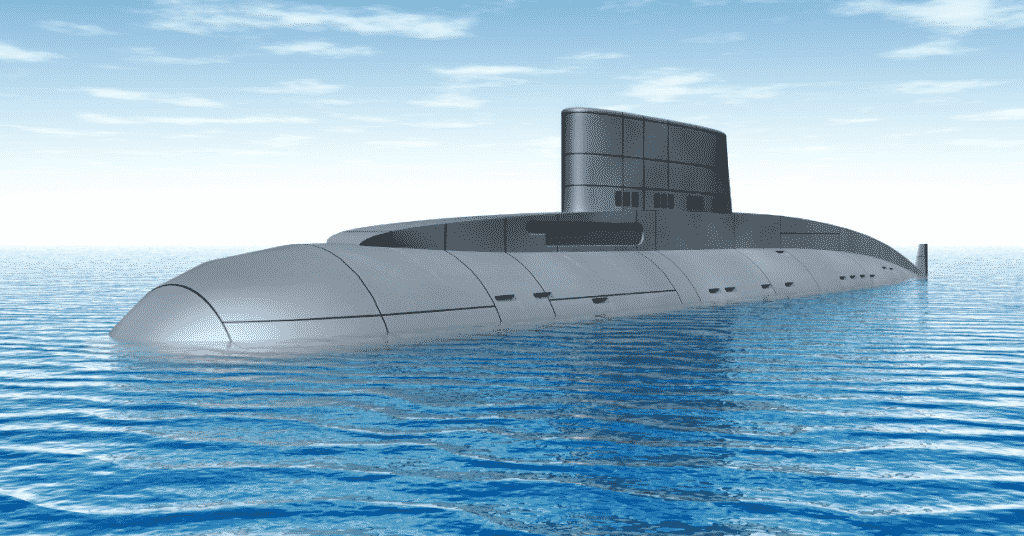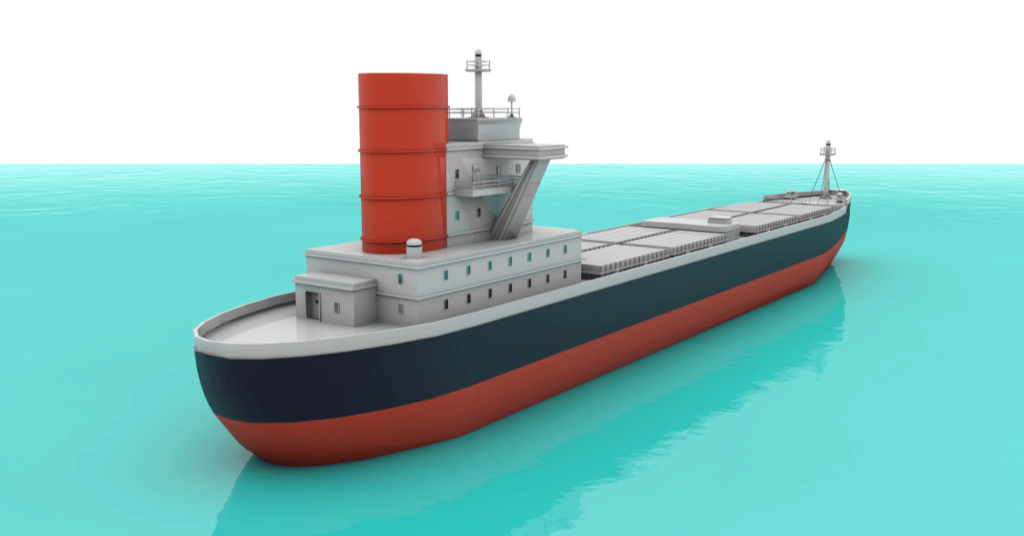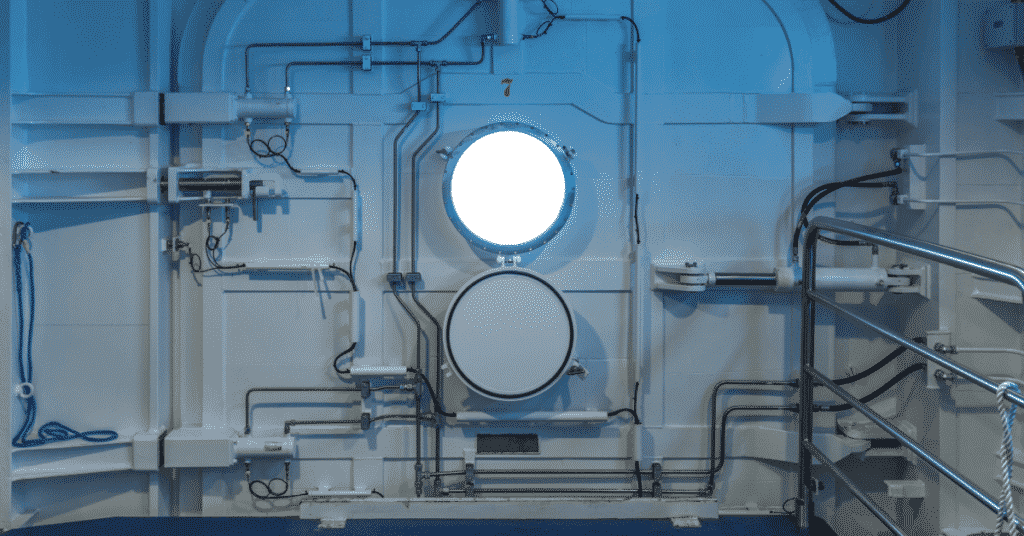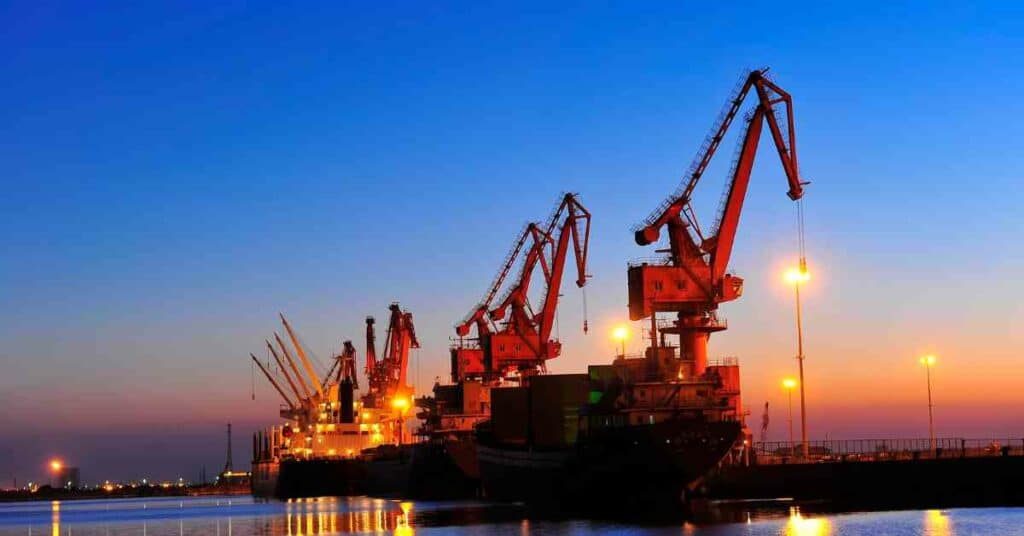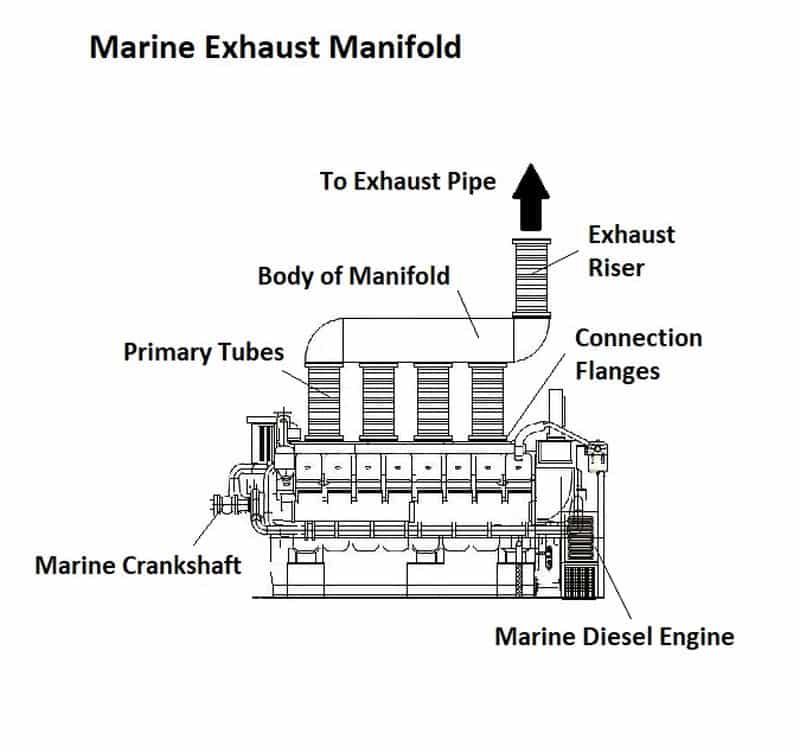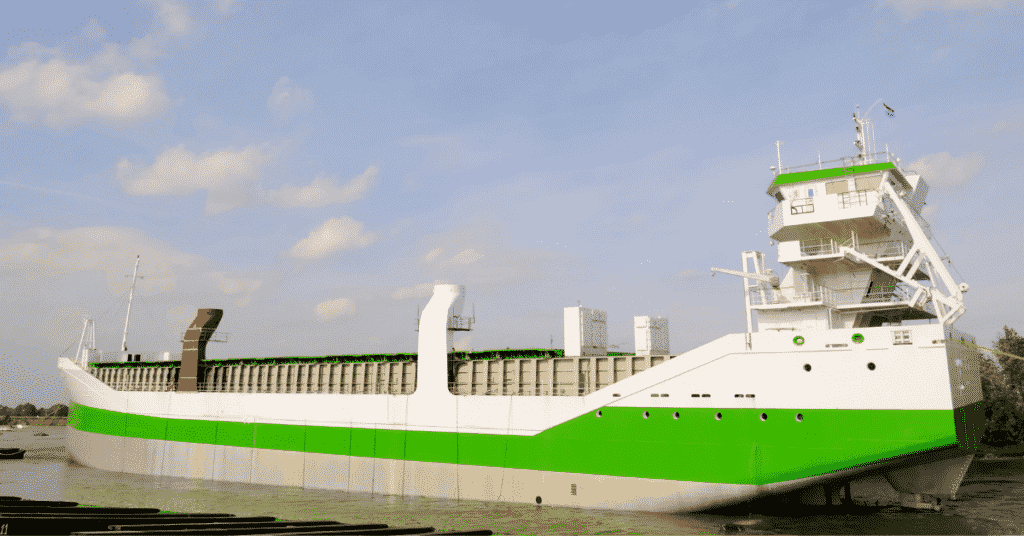Top 20 Software Used In Naval Architecture
Naval architecture is a complex field that is often tricky to work in.
Architects and engineers can only visualize the final structure and have to work off reports and drawings to ensure that the final product meets the engineering and design aspects.
To improve the workflow, different software is used in this industry to ensure that the design and visualization processes are as close to reality as possible.

The main categories of software used by naval architects include:
1. CAD/CAM/CAE software
2. Structural analysis applications
3. Hydrostatics, hydrodynamics, and stability tools
4. Seakeeping & manoeuvring tools
5. Project planning software
6. Integrated suites & workstations
CAD software provides initial designs of the external hull form of ships and offshore structures. These designs are then imported into static stability tools that ensure the design is stable.
Hydrodynamic tools ensure that the structure is also stable in wave and wind conditions. Certain applications can also estimate the resistance, recommend alterations, design appendages, and estimate the sailing speed for the design.
Once the external hull form is designed, various applications can be used to design the structural members inside the hull. They also allow the final general arrangement plan to be designed keeping in line with safety regulations and comfort requirements.
To keep track of these varied processes, project planning software manages and budget the entire operation before a single dollar is even spent.
Certain firms specialize in designing integrated suites that have many of the above software and tools integrated into a single workstation. By installing various plug-ins or features, an entire structure can be designed from scratch.
In this article, we take a look at the 20 most common software in the naval architecture industry. This list of software is by no means exhaustive- experienced naval architects use a variety of diverse applications to meet their requirements.
Some of these range from complex modelling and CFD tools to applications as simple as MS Excel. While many of this software tools are licenced, we have included exceptional free and open source options that are in use by the industry.
1. SolidWorks – CAD Modelling
Developed by Dassault Systèmes, SolidWorks is a Windows-based CAD and CAE software that has been in use since 1995. It is a solid modeller that works using features and parameterized functionalities. Parameters are used to define sketches that are then converted to models and assemblies.
SolidWorks offers users three main options- drawings, parts, and assemblies. Parts define the core of the SolidWorks software and enable users to create distinct parts by defining geometry conditions from a GUI display.
Drawings can be prepared from parts to meet international standards on engineering schematics. Assemblies are a collection of parts that are mated or merged to form a complete working assembly.
SolidWorks supports formats and standards such as ANSI, ISO, DIN, GOST, JIS, BSI, and SAC. Final assemblies and parts can be exported in the standard “.SLDPRT” or “.SLDASM” extensions that come with the software or as “.model”, “.igs”, “.iges”, and “.step” files.
SolidWorks operates as a parametric software, meaning that relations and the driving feature behind sketches, parts, and assemblies. Sketches can be either 2D or 3D and support a variety of features to model real-world construction of parts.
For naval architects, SolidWorks is the right choice to create complex geometries ranging from marine engines and piping to structural members and the outer hull. Models from SolidWorks can be easily exported to other software for further analysis. A nifty feature is the cost estimation tool that forecasts expenses during the construction process.
Know more here.
2. AutoCAD – CAD Modelling
AutoCAD is a CAD software in use since 1982 and developed by Autodesk as a standalone application that provided CAD features to users outside mainframe systems. AutoCAD was a defining software in the engineering sector and remains one of the top CAD software in use. It can be used on Windows, macOS, iOS, and Android devices, with options for student trials, academic licences, and enterprise versions.
AutoCAD is predominantly used for generating engineering schematics and technical drawings, but can also be used for 3D modelling and rendering.
It natively saves files in the “.dwg” format (drawings) but can also export files in the “.dxf”, “.jpg/jpeg”, “.png”, and “.svg” formats. Technical drawings meet ANSI and ISO regulations and can be saved as “.pdf” files. An interesting feature of AutoCAD is the integration of APIs for AutoLISP, Visual LISP, VBA, and C++’s ObjectARX. It can also be integrated with Autodesk software such as Advance Steel, AutoCAD Electrical, Mechanical, Civil 3D, and Electrical.
Much like SolidWorks, naval architects use AutoCAD to model the initial design of the hull form and structural members. It can be used to generate a vessel’s linesplan, midship sections, and member designs.
Know more here
3. Ansys Structural – Structural Response and Strength
Ansys Workbench collectively refers to several modules available for Finite Element Analysis (FEA), Computational Fluid Dynamics (CFD), thermodynamic analysis, structural strength tests, and hydrodynamic response analysis. The most widely used module is Ansys Structural that is used to study the strength and response characteristics of complex geometries. Parts can be designed either in the native Design Modeller and Space Claim suites, or imported from SolidWorks, CATIA, and other CAD software.
The structural module employs FEA techniques to yield the strength, toughness, elasticity, temperature distribution, shear forces, and stresses acting on different members of a geometry. The software is largely driven by user-defined limits and convergence criteria.
Users have the option to refine meshes using a variety of limits and shapes and can impose specific boundary conditions of different parts of the structure. Governing conditions and results are exchangeable with other Ansys modules through the Workbench.
Naval architects use Ansys Structural to analyse structural response under loading conditions such as hydrostatic and hydrodynamic pressures, slamming and green water loading, failure state loads, and extreme conditions. Using acceptable limits from techniques such as the LRFD and WSD methods, naval architects can ensure that the structural response does not exceed permissible deformations, stresses, and strains.
Know more here.
4. Ansys Fluent – Computational Fluid Dynamics
Fluent is another industry-standard module developed by Ansys that can be linked with geometries defined natively or imported from other CAD software. Fluent deals with CFD or studying fluid responses around a body. Fluent can be used for a single phase of poly-phase flows to simulate conditions for the superstructure, submerged part of the hull, and the portion of the hull that operates in both the submerged and surfaced condition.
Fluent uses a mesh-driven solver that defines user requirements in terms of phase properties, wall conditions, flow stream properties, and solving methods. Some of the popular methods of CFD solution techniques in Ansys Fluent include the k-omega, k-epsilon, and Spalart Allmaras equations.
Fluent can also account for laminar and turbulent conditions, turbulent free stream conditions, near-wall shear, SST wall conditions, and flow separation.
Naval architects prefer Fluent for robust CFD requirements and for combining it with other Ansys modules through Workbench. Given the user-driven controls of Ansys features including convergence conditions, it provides more control to the end-user and is capable of visualizing transient and steady-state phenomena.
Fluent is used to determine drag coefficients, resistance contributions from the hull, and study the fluid flow around the hull. When using poly-phase flows, the wave-making effect at the ship’s bow can also be observed and provides an initial estimate of the characteristics for designing a ship’s bulbous bow.
Know more here.
5. Ansys Aqwa – Seakeeping & Manoeuvring
Ansys Aqwa is used to study hydrodynamic response and performance of vessels, offshore structures, and renewable energy convertors. It has application in modelling the responses of diverse structures ranging from ships and research vessels to FPSOs and semi-submersibles. Aqwa can model structure behaviour in different operating conditions including sheltered harbours or the open ocean.
Using the native CAD tools or imported models, Aqwa can study hydrodynamic parameters, motions, and RAO analysis. These motions and responses can be used by Ansys structural to then obtain the loads and stresses acting on the structure. Aqwa diffraction is also able to analyse moored or connected structures in different wave conditions. It is used in studying complex motions during dynamic positioning (DP) or tethering operations.
Ansys Aqwa can be linked to other Workbench modules and MS Excel for further analysis. The most common use of Aqwa is in obtaining vessel RAOs and in modelling marine cable behaviour. The software also supports transformative analysis i.e., the transformation between the time and frequency domains. The mooring functionality is particularly useful for the offshore industry.
Know more here.
6. OrcaFlex – Hydrodynamic Response & Analysis
OrcaFlex is a dynamic analysis tool developed by Orcina (founded in 1986) commonly used in the shipbuilding and offshore industry. It is a licensable software that is used in diverse fields such as renewable energy, oceanography, seismic studies, defence systems, aquaculture, oil & gas industry, subsea operations, and hydrodynamic studies.
OrcaFlex is commonly used in analysing risers, mooring systems, installation scenarios and planning, towage planning, renewable convertor structures, flexible risers and umbilical dynamics, jetty and pier responses, seismic array positioning, and towed body dynamics.
Naval architects use OrcaFlex to plan the installation of various marine components including anchoring, mooring, riser dynamics, cable lay dynamics, pipelay analysis, splash-zone deployment, lift dynamics, seabed plough deployment, deep-water installations, J-tube pull-in, and seabed connections. It is used to study buoy behaviour and model potential buoy responses.
This can then be used to gauge the wave conditions acting on offshore structures and the resultant data may be fed into other software for dynamic analysis. In the defence sector, OrcaFlex is built to handle minesweeping studies, ship-to-ship restocking, sonar modelling, and helicopter landing systems.
Know more here.
7. WAMIT – Numerical Computation & Processing
WAMIT is a numerical-solving program that estimates wave loading and dynamic behaviour of offshore and maritime structures under various wave loading conditions. The software was developed at MIT and stands for Wave Analysis MIT (WAMIT).
Developed and launched in 1987, the software is a niche tool that employs the potential theory to model structural response. It operates using both linear and second-order potential theories and solves systems of boundary integral equations to obtain the final response.
The success of WAMIT during the initial years led to certain panel methods being classified as “WAMIT-type solutions”. The panel method is a specific case of boundary integral methods that represent the potential distribution across the structure in the form of B-splines. WAMIT can solve body equations of motion and responses in six degrees of freedom, including coupled cases (such as heave-pitch coupling).
A particularly useful feature in WAMIT is that simple geometry that does not need higher-order solutions can be assessed using basic quadrilateral meshing techniques. As the geometry becomes complex, the software transitions to a continuous potential distribution across the structural surface.
Know more here.
8. STAAD Pro – Structural Analysis
STAAD Pro, built by Research Engineers International in 1997 and bought by Bentley Systems in 2005, is a structural analysis application that is used in various industries to model the structural performance of complex geometries. It can be applied to diverse scenarios including buckling, p-delta, geometric non-linear, and pushover analysis. STAAD also makes use of the design codes of more than 90 international standards.
Naval architects use STAAD Pro to study the strength and performance of the hull during adverse waves and operational conditions. The models can be imported from file types such as “.dxf” or from MS Excel and Bentley MicroStation.
It also has a native modeller that has a comprehensive library of beams and scantling members that can be used to represent decks, floor plans, bulkhead construction, and double hull members. The advanced features in the modeller intelligently assign joints and welding points based on the interaction between the different members.
STAAD Pro can be used in conjunction with VBA macros on MS Excel, Autodesk AutoCAD, Bentley MicroStation, and HTML applications.
Know more here.
9. OpenFOAM – Computational Fluid Dynamics
OpenFOAM, developed in C++, is an open-source toolbox for numerically solving CFD and poly-phase flow around bodies. It is an acronym for Open-source Field Operation And Manipulation. OpenFOAM is a common CFD software that is widely used due to the open GNU licence.
It is combined with ParaView for flow visualization. Unlike the other CFD software on this list, OpenFOAM does not adopt a GUI for easy visualization and rather provides numerical estimates of fluid flow. It needs to be integrated with other tools for visualization.
There are 3 OpenFOAM variants in use- the OpenCFD version, FOAM-Extend, and OpenFOAM Foundation version. This software excels in the fields of high-performance computing, meshing, multiphase studies, numerical solutions, optimization studies, turbulence modelling, and marine dynamics.
OpenFOAM simulations are commonly used by the top naval architecture firms as it provides for a high level of customization by the end-user. Results from OpenFOAM can be imported into other post-processing software for further analysis.
Know more here.
10. Simcentre Star CCM+ – Computational Fluid Dynamics
Developed by Siemens Digital Industries, Star CCM+ is a CFD software used in fields such as automobile engineering, naval architecture, and industrial layout planning. It allows users to model diverse features including fluid flow heat transfer, element stress, particulate flow, electromagnetics, and fluid phenomena. The CFD module is also able to handle complex phenomena such as flow through porous media, multiphase flow, non-Newtonian fluid modelling, turbulence analysis, and viscoelasticity in the fluid.
Star CCM+ has a unique feature- the polyhedral cell formulation, that allows the modeller to handle different mesh types and shapes. This also allowed rapid solver convergence compared to tetrahedral mesh or the equivalent 2D quadrilateral mesh. For CFD applications, the software predominantly works on solving the Navier-Stokes equations numerically. Such solutions are computed using Finite Element Analysis (FEA) or the Finite Volume Method (FVM) across each mesh element.
Know more here.
11. MaxSurf – Hydrodynamics, Stability & Resistance
Developed by Bentley Systems, MaxSurf is a part of a suite of programs intended to cover the lifecycle of ship design and construction. MaxSurf specifically works in creating initial designs and testing the hull form performance. Rather than using a NURBS-based model, it allows more control over hull splines. Based on the hull model, the user can obtain a variety of hydrostatic and hydrodynamic data including resistance and RAOs. MaxSurf also provides the latest stability criterion based on design estimates and provides regulations that guide the ship design.
The software can determine the stability of the hull, determine resistance and powering curves, and even estimate the sailing velocity of the ship. MaxSurf is commonly used by naval architects as the one-stop solution for initial design estimates. The integrated suite includes a 3D surface Modeler, the Stability Module for static stability, the Resistance Module for powering and performance estimation, the Motions Module for seakeeping, and the Structure Module for initial structural design.
By imposing different wave conditions, the user can also test the ship’s intended response and make necessary alterations to the design with minimal effort.
Know more here.
12. MOSES – Offshore Hydrodynamic Analysis
MOSES is another software from Bentley System and part of its overall naval architecture and marine engineering suite. Unlike MaxSurf that primarily focuses on ships and other ocean-going vessels, MOSES is an integrated offshore simulation software in use by various industries including the oil & gas sector and the offshore renewable energy field.
MOSES uses several features to determine model hydrostatics, hydrodynamics, mooring, anchoring, and overall stability. It can also run simulations to test for different states of the offshore structure including transportation, launching, lifting, and lifetime performance. Running simulations cuts down on operational time and also predicts possible faults or flaws in the intended operation.
Using optimization modules, MOSES can also suggest changes to the overall design to improve stability and weight distribution. The range of simulations extends to other operations that may be required over the lifecycle of the offshore structure. Besides this, MOSES provides standard features including stability and seakeeping of the structure, mooring and launch analysis, and structural integrity analysis. It uses a variety of solving techniques including strip theory, 3D diffraction, time-domain equations, and FEA/FEM solutions to ensure the accuracy of the final results.
Know more here.
13. Rhinoceros 3D – CAD Modelling
Rhino3D is a CAD software from Robert McNeel & Associates and is modelled using the NURBS modelling of vessel hulls. It is a freeform surface modeller i.e.; it provides freedom to the user to draw hull forms within the limits of the NURBS models. Models can be exported to other software in a variety of file extensions including “.dwg/.dxf”, “.iges/.igs”, “.sldprt/.sldasm”, and “.3ds”.
Rhino3D differs from other CAD software in that it uses freeform surfaces for model creation rather than opting for polygon meshed shapes. This yields a smoother finish that enhances quality in the final linesplan of the vessel. It can be used for a variety of purposes, including the design of automobiles and marine crafts.
By combining Rhino3D with other software such as AutoCAD and Adobe, different features can be integrated. For instance, renderings become easier using the Adobe Illustrator plug-in, while Autodesk AutoCAD allows for edits to be made on either software. Rhino3D also has a 3D plug-in that can be used to render and create 3D parts using compatible printers.
Know more here.
14. FORAN System – CAD & CAE Modelling, Maritime Project Management
Developed by SENER, a private engineering firm that works closely with software employed in engineering applications, FORAN System is an integrated CAD and CAE software used in the maritime industry. With extensive use in designing both ocean-going vessels and offshore structures, it can be used for any stage of the design and construction processes. FORAN is largely a database-driven software that utilizes GPU capabilities to visualize geometries and design parameters.
FORAN predominantly works on the design of cargo vessels such as bulk and chemical carriers, container ships, oil tankers, and ro-pax or ro-ro vessels. It is also able to design naval vessels (including submarines) with the provision for designers to achieve advanced hull forms and meet specific requirements. The naval module also incorporates additional loading criteria from armament launching and loading. FORAN can also be used in the offshore industry with application to moored and free rigs, FPSOs, and SPAR platforms. It can also design tugs that are required to work across diverse conditions.
FORAN also allows naval architects to design the hull using FNORM that incorporates class society regulations and segments the hull into blocks. The general arrangement plans for ships are tracked and designed by the FGA module stored on the FORAN database. It can also execute probabilistic damaged stability calculations for different flooding conditions. The FSUBD module implements SOLAS regulations for analysing damaged conditions. FORAN also has modules to handle outfitting work including pipeline routing and electrical component designs. Lastly, the software also tracks the entire project using the Product Lifecycle Management module (PLM).
FORAN also works with virtual reality (VR) headsets that enable naval architects to explore the designed spaces used Head-Mounted Displays (HMDs) from the interactive FORAN FVIEWER VR module.
Know more here.
15. MATLAB – Numerical Computation & Processing
MATLAB, developed by MathWorks, is a heavy-duty mathematical and engineering software extensively used by naval architects, marine engineers, offshore researchers, and other maritime professionals to handle and process large quantities of data. MATLAB comes with a host of features used to model and study physical phenomena, geometries, and structures in the form of mathematical systems. The software is often combined with Simulink, a simulation suite from MathWorks that is used to simulate fluid flow, structural response, and hydrodynamic responses.
MATLAB is predominantly used by research and development teams to test new theories and implement complex numerical modelling techniques. It is commonly used to build in-house solutions or variants of existing solutions that numerically estimate seakeeping and structure manoeuvring. Naval architect firms use MATLAB to track member scantling and ensure compliance with classification society recommended practices.
For numerical solutions or in-house data handling processes, MATLAB is an excellent software. It can be integrated with MS Excel for easier data handling. It also has a suite of features to handle time and frequency domain computations and to visualize data using plotting tools.
Know more here.
16. Aveva Marine – Integrated Maritime Solutions
Aveva is a leading engineering software organization that specializes in the maritime and marine sectors. They offer a host of solutions ranging from ship design to digital twinning and remote maintenance tools.
Some of the top Aveva Marine software include E3D for designing, Aveva Outfitting, Aveva Hull Design, Point Cloud Manager for workflow design & optimization, Aveva ERM for project management, and Unified Operations Centre for operation simulations.
Aveva also specializes in integrating software, ensuring scalability of solutions, ensuring connectivity of the hundreds of assets projects may require, and even integrating IoT into designs to ensure state-of-the-art vessels.
Know more here.
17. NUPAS Cadmatic – Integrated Maritime Solutions
NUPAS Cadmatic is an engineering solutions provider in different fields, including the marine and offshore sectors. Their marine design software solutions ensure standardized quality of design and engineering during the project lifecycle. Their diverse solutions cover a range of features naval architects require, and most functionalities are data-driven.
Some of the top software solutions provided by Cadmatic marine include Hull & Structural Design, Outfitting & Piping Design, Electrical & Automation, and Information Management. Cadmatic has also worked with NAPA to integrate many features and ensure cross-platform functionality. As an integrated maritime solution, all aspects of the project can be tracked and project phases can be recorded right from the design stage till eventual hand-over to the client.
Know more here.
18. NAPA – Integrated Maritime Solutions
NAPA is a marine engineering software firm that specializes in the integration of CAD with data analysis and other software solutions. It provides features that look into phases right from design to operations.
The main software solutions provided by NAPA include the Hydrostatics & Stability Module, the Hydrodynamics Module, Hull Form Design, and Structural Design Module. Besides naval architecture, the firm also specializes in software for ship operations and maintenance. This includes real-time ship stability and safety, data monitoring and logging, performance optimization, and real-time performance analysis of a fleet. This includes NAPA Fleet Intelligence, ClassNK-NAPA Green, NAPA Voyage Optimization, NAPA Loading Computer, and the NAPA Emergency Logger.
Know more here.
19. FreeShip – Open-Source Hull Modelling
FreeShip is open-source software that is used to model the hull form of maritime vessels ranging from ocean-going ships to yachts and boats. It works based on mathematically modelling the hull using a subdivision approach. Opting for subdivision surfaces provides a greater deal of flexibility and users are not restricted to NURBS curves. The models can be exported in various formats including “.igs” and “.iges”, enabling the software to be quickly integrated with other software. FreeShip also outputs a detailed linesplan of the final vessel. It can perform preliminary hydrostatic analysis for different wave loading conditions.
Know more here.
20. MS Excel – The software that ties it all together
The last software on this list may raise a few eyebrows but is an essential tool for any naval architect. In the realm of complicated software that model complex phenomena, MS Excel is an easy means to simplify the data, break it down into manageable processes, and visualize various aspects of the construction life cycle.
MS Excel is mainly used in the fields of marine production and planning and is an excellent tool to present data in a non-technical fashion to clients and end-users. Common uses of this tool include forecasting timelines, initial cost estimates, inventories of parts and requirements, recording technical parameters, and analysing structural scantling.
Know more here.
Do you have info to share with us ? Suggest a correction

About Author
Ajay Menon is a graduate of the Indian Institute of Technology, Kharagpur, with an integrated major in Ocean Engineering and Naval Architecture. Besides writing, he balances chess and works out tunes on his keyboard during his free time.
Latest Naval Arch Articles You Would Like:
Subscribe To Our Newsletters
By subscribing, you agree to our Privacy Policy and may receive occasional deal communications; you can unsubscribe anytime.










